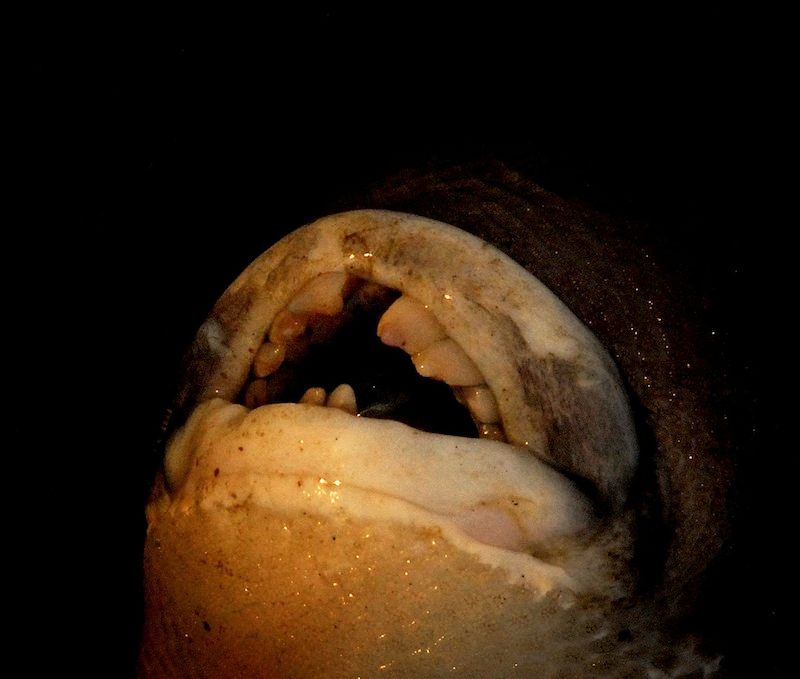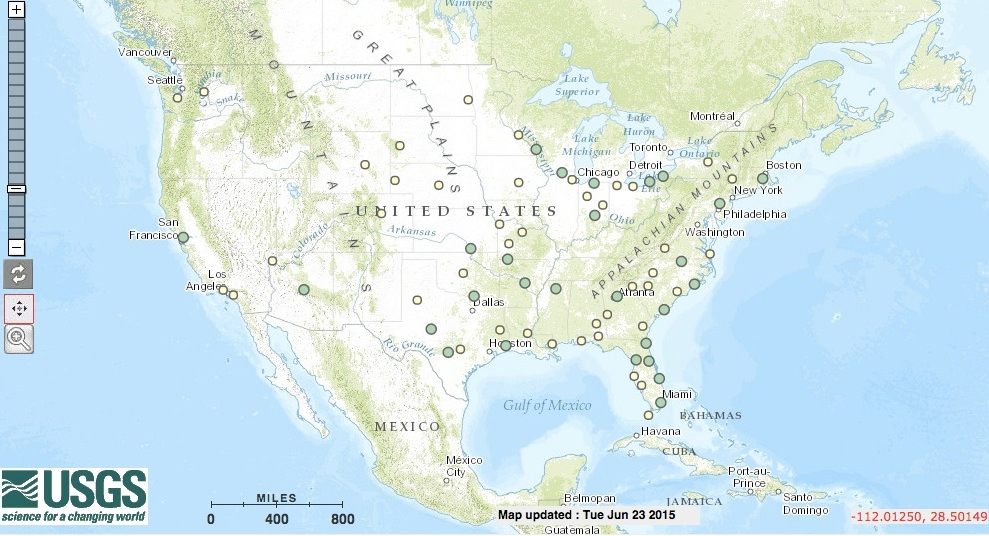Smile! It’s the Fish With Human Teeth

A sheepshead fish. (Photo: Andrea Westmoreland)
Over the weekend, a fisherman in New Jersey caught a fish that he described to local news as “different.” He’d “never seen anything like that before in the lake,” he said. What made this fish so notable? It had teeth—but not the sharp, pointed teeth of a piranha.
Pulling back the lip of the fish revealed a row of large, dull choppers. Human-looking teeth.

The fish in question. (Image: Screenshot via 6ABC)

This fish was a pacu—a freshwater Amazonian fish that is related to piranhas. They’re both big, flat fish, and they both have jaws with teeth growing out of them. But while the piranha uses its teeth to snap bites out of other fish, the pacu uses its bony protrusions to eat aquatic plants, nuts that fall from trees and snails.
Knowing that doesn’t keep those teeth from being deeply uncanny, though. They look like they could have been stolen from a human.
American encounters with pacu are more common than one might imagine, given that the fish’s natural habitat is a continent away. But since 1970, the US Geological Survey has documented a total of 114 sightings. The reports have come from across the country, but most commonly from Florida (21), Texas (13), Georgia (6), Indiana (6), and North Carolina (6).

Yellow dots denote one pacu sighting; green dots mean 2 to 5 (Map: U.S. Geological Survey)
These fish have been found in canals, ponds, lakes, rivers, creeks, gullies, brackish tributaries, bayous, reservoirs, and, once, in a gravel pit. But before they were found out on their own in the world, every single one of them most likely lived in an aquarium. Pacu can survive in relatively chilly water, but even in Texas, the water gets too chilly for them to overwinter. Really, the only way for them to end up in American waterways is via a pet store: they grow fast, and it seems that many a fish owner has bought a pacu only to find that a large fish with human teeth was not a creature they could handle.
Once, though, there were fish with human-like teeth that made their homes, of their own accord, in America. Brooklyn’s Sheepshead Bay was named for the sheepshead fish, whose teeth are even more disturbing, as they look like human teeth but come in multiple rows. These teeth are perfect for grinding down the shells of shellfish—like the oysters that used to grow in passels in the waters around New York City. Here’s what they look like:

Yeah. (Video: nancydavidphd777/Youtube)
If this seems like a nightmare-inducing abomination, it might be helpful to think that fish pioneered teeth. Right now, the best theory of tooth evolution posits that the exoskeleton armor that fish had developed moved towards the perimeter of their mouths—the first fish teeth were likely something like spiky lip scales. These spiky lip scales would have provided their owners a significant advantage in diet. With the power to rip other living creatures apart, they could move beyond life in the mud and filter feeding.
Or, as one fish-tooth researcher put it to Nature a few years ago: “We now have to assume our teeth evolved from the armor of mud-slurping fish.” And while evolution took that idea in a different direction for many fish—which often have equally creepy shell-crushing dentition pads further back in their throats—the pacu just happened to evolve teeth that look disturbingly like our own. So eat up?
Gastro Obscura covers the world’s most wondrous food and drink.
Sign up for our regular newsletter.



































Follow us on Twitter to get the latest on the world's hidden wonders.
Like us on Facebook to get the latest on the world's hidden wonders.
Follow us on Twitter Like us on Facebook